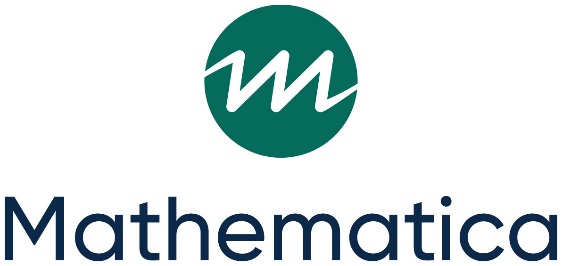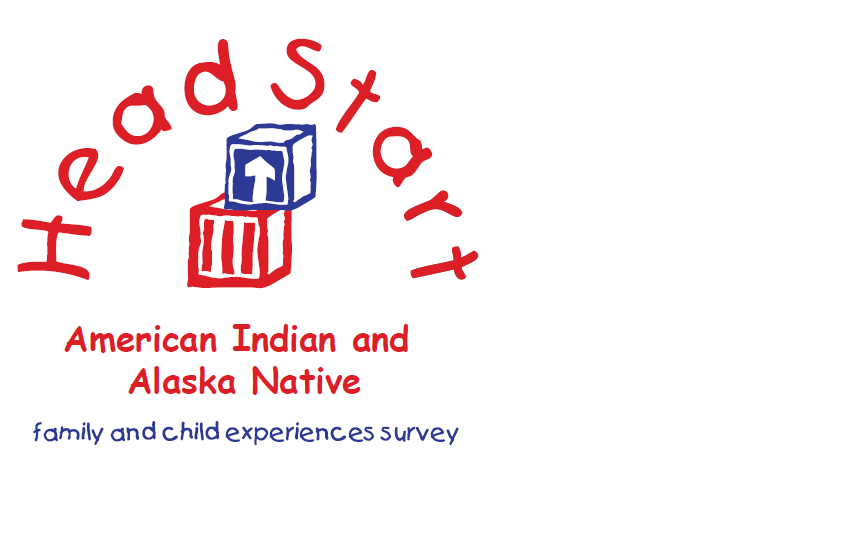Attachment 22. AIAN FACES 2019 HS Center Director Survey_20200511_CLEAN
OPRE Evaluation: Head Start Family and Child Experiences Survey (FACES 2019) [Nationally representative studies of HS programs]
Attachment 22. AIAN FACES 2019 HS Center Director Survey_20200511_CLEAN
OMB: 0970-0151
O
 MB
Number: 0970-0151
MB
Number: 0970-0151
Expiration Date: 04/30/2022


American Indian and Alaska Native Head Start Family and Child Experiences Survey 2019 (AI/AN FACES 2019)
Spring 2020 |

Paperwork Reduction Act Statement: The referenced collection of information is voluntary. An agency may not conduct or sponsor, and a person is not required to respond to, a collection of information unless it displays a currently valid OMB control number. The valid OMB control number for this information collection is 0970-0151 which expires 04/30/2022. The time required to complete this collection of information is estimated to average 30 minutes, including the time to review instructions, search existing data resources, gather the data needed, and complete and review the collection of information. If you have comments concerning the accuracy of the time estimate(s) or suggestions for improving this form, please write to: Mathematica, 1100 1st Street, NE, 12th Floor, Washington, DC 20002, Attention: Lizabeth Malone. |
Introduction


SURVEY INFORMATION
Mathematica is conducting the American Indian and Alaska Native Head Start Family and Child Experiences Survey 2019 (AI/AN FACES 2019) under contract with the Administration for Children and Families (ACF) of the U.S. Department of Health and Human Services (DHHS).
The Administration for Children and Families (ACF) has decided to conduct AI/AN FACES 2019 remotely via the web. We will continue with plans to collect surveys of program directors and center directors.
Given these extraordinary circumstances, please consider the typical dates and times of operations and those initially planned for the 2019-2020 program year when answering question in this survey.
To help us understand your center better, we need you to complete this brief survey. It asks about staffing and recruitment; Native culture and language; staff education and training; curriculum and assessment; physical activity and nutrition; program management; and a few questions about yourself your center and staff as well as your thoughts about program management and your background.Please be assured that all information you provide will be kept private to the extent permitted by law.
Thank you for taking the time to complete this survey. Questions are not always numbered sequentially, so please answer questions in the order they appear, regardless of the question number. Additionally, you may be told to skip some questions because they do not apply to you.
Your participation in the study is voluntary and you may refuse to answer any questions you are not comfortable answering. Your answers will not be shared with other staff at your center, or anybody else not working on this study. Please be assured that all information you provide will be kept private to the extent permitted by law. The information you provide to the study will be protected and will only be seen by selected members of the study team. The survey will take about 30 minutes of your time to complete.
AB. NATIVE CULTURE/LANGUAGE AT CENTER


AB1
Thefirst questions are about use of Native culture and language at your center.

Does your center have a cultural/language elder or specialist? By cultural/language elder or specialist we mean someone that you may rely on or consult with in regards to culture or language. Though culture and language are interrelated, sometimes an elder or specialist might only be consulted on one or the other, and not both. |
|
|
Yes |
|
No GO TO AB3 |
AB2




AB3
Who is your cultural/language elder or specialist?
MARK ONE OR MORE BOXES
![]() 1 A
spiritual leader
1 A
spiritual leader
![]() 2 An
influential member of the tribal or cultural community
2 An
influential member of the tribal or cultural community
![]() 3 A
member of the tribal or cultural community
3 A
member of the tribal or cultural community
![]() 4 Other
– Specify
4 Other
– Specify
![]()



AB4
Do children at your center receive Native language lessons? |
|
|
Yes |
|
No GO TO AB13, PAGE 4 |


What languages are they taught through Native language lessons? Please list all Native languages taught:
1
![]()
2
![]()
3
![]()
4
![]()
5
![]()



AB12
Who teaches the Native language lessons?
MARK ONE OR MORE BOXES
![]() 1 Lead
classroom teacher
1 Lead
classroom teacher
![]() 2 Assistant
classroom teacher
2 Assistant
classroom teacher
![]() 3 Paid
aides
3 Paid
aides
![]() 4 Cultural/language
elder or specialist
4 Cultural/language
elder or specialist
![]() 5 Other
– Specify
5 Other
– Specify
![]()
AB5


In what ways does your center support parent engagement in children’s Native language learning?
MARK ONE OR MORE BOXES
![]() 1 Offering
language lessons to parents
1 Offering
language lessons to parents
![]() 2 Sending
home flyers about the words and phrases children are learning
2 Sending
home flyers about the words and phrases children are learning
![]() 3 Sending
home language curriculum materials (e.g. curriculum manuals)
3 Sending
home language curriculum materials (e.g. curriculum manuals)
![]() 4 Offering
single events or workshops about the Native language and Native
language learning (e.g. family nights)
4 Offering
single events or workshops about the Native language and Native
language learning (e.g. family nights)
![]() 5 Sharing
multimedia such as CDs or videos with language resources (e.g.,
audio or video of the language being spoken)
5 Sharing
multimedia such as CDs or videos with language resources (e.g.,
audio or video of the language being spoken)
![]() 6 Language
communities
6 Language
communities
![]() 7 Other
– Specify
7 Other
– Specify
![]()

During this program year, how often have children in your center done the following as part of their Head Start activities?
|
|||||||||||||||||||||||||||||||||||||||||||||||||||||||||||||||||||||||||||||||||
AB13


AB11
What percentage of center administrative staff and teachers are AI/AN members? Include both staff who come from the same or different tribes as the children and families served. |
||||
|
-
PERCENT OF ADMINISTRATIVE STAFF

A. Staffing and Recruitment

Next, we have some questions about your center, staffing and recruitment. We have several questions about the schedule available for Head Start funded center-based enrollment slots. These questions are focused only on Head Start slots. Please do NOT consider Early Head Start slots.


A0-2a
A0-1
What are the start and end dates of the program year for Head Start funded center-based slots? |
||||||||||||
|
|
MONTH |
YEAR |
|
||||||||
|
A0-1a. Start date |
|
|
|
|
|
|
|
|
|
|
|
|
|
|
||||||||||
|
A0-1b. End date |
|
|
|
|
|
|
|
|
|
|
|

We would like to learn about the number of days per week and hours per day that services are provided for Head Start funded center-based enrollment slots.
How many days per week do Head Start funded slots in your center receive services?
MARK ONE OR MORE BOXES
![]() 1 4
days per week
1 4
days per week
![]() 2 5
days per week
2 5
days per week


A0-3
How many hours a day is this program available to Head Start funded center-based slots? Please consider the working hours for this center, rather than the individual child or classroom. |
|||
|


A0-4
Is this program considered a full-day program or half-day program?
MARK ONE ONLY
![]() 1 Full-day
1 Full-day
![]() 2 Half-day
2 Half-day
![]() 3 A
combination of both
3 A
combination of both


A1
How many lead teachers are currently employed in this center? By “lead teacher” we mean the head or primary teacher in the classroom. If teachers are co-teachers count them here. |
|||
|


A2
How many of these lead teachers were new to the center this year?
By “lead teacher” we mean the head or primary teacher in the classroom. If teachers are co-teachers count them here.
-
LEAD TEACHERS



A12h
A4
In the past 12 months, how many lead teachers left and had to be replaced?
By “lead teacher” we mean the head or primary teacher in the classroom. If teachers are co-teachers count them here.
-
LEAD TEACHERS



A12i
Does your center serve any children or families who speak a language other than English at home? |
|
|
Yes |
|
No GO TO SECTION B, PAGE 8 |





A12j
Other than English, what languages are spoken by the children and families who are part of your center?
MARK ONE OR MORE BOXES
![]() 35 Native
language(s) – Specify
35 Native
language(s) – Specify
![]()
![]() 12 Spanish
12 Spanish
![]() 21 Other
– Specify
21 Other
– Specify
![]()

Do you have any lead teachers or assistant teachers who are bilingual? By “lead teacher” we mean the head or primary teacher in the classroom. If teachers are co-teachers count them here. |
|
|
Yes |
|
No GO TO A_C3j, PAGE 7 |





A12k
Other than English, which of the languages that are spoken by the children and families in your center are also spoken by any lead teachers or assistant teachers in your center?
By “lead teacher” we mean the head or primary teacher in the classroom. If teachers are co-teachers count them here.
MARK ONE OR MORE BOXES
![]() 35 Native
language(s) – Specify
35 Native
language(s) – Specify
![]()
![]() 12 Spanish
12 Spanish
![]() 21 Other
– Specify
21 Other
– Specify
![]()


A_C3j
Are you unable to provide interpreters or translate written materials in any of the languages spoken by children and families that are part of your center because you do not have staff members that speak those languages? |
|
|
Yes |
|
No |


B. Staff Education and Training


B3h
The next questions are about efforts to promote staff education and training.
|
Programs and centers can support staff’s professional development in a lot of different ways. Does your program or center offer the following to teachers, family child care providers, or home visitors? |
|||||||||||||||||||||||||||||||||||||||||||||||||||||||||||||||||||||||||||
|
||||||||||||||||||||||||||||||||||||||||||||||||||||||||||||||||||||||||||||

|
How often do the following staff typically participate in training and technical assistance activities? Is it every week, 2 or 3 times a month, monthly, once every few months, or once a year or less? By “lead teacher” we mean the head or primary teacher in the classroom. If teachers are co-teachers count them here. |
|||||||||||||||||||||||||||||||||||||||||||||
|
||||||||||||||||||||||||||||||||||||||||||||||
B4


Who conducts the professional development activities?
MARK ONE OR MORE BOXES
![]() 1 Center
or grantee staff
1 Center
or grantee staff
![]() 2 Community
resources
2 Community
resources
![]() 3 Consultants
3 Consultants
![]() 11 AI/AN
T/TA provider
11 AI/AN
T/TA provider
![]() 5 National
Head Start Association
5 National
Head Start Association
![]() 10 State
conferences
10 State
conferences
![]() 15 Regional
conferences
15 Regional
conferences
![]() 16 National
conferences
16 National
conferences
![]() 17 Tribal
conferences
17 Tribal
conferences
![]() 7 Private
companies or organizations
7 Private
companies or organizations
![]() 13 OHS
Regional T/TA Providers
13 OHS
Regional T/TA Providers
![]() 14 OHS
National Centers
14 OHS
National Centers
![]() 12 Cultural/language
elder or specialist
12 Cultural/language
elder or specialist
![]() 8 Other – Specify
8 Other – Specify
![]()
![]() 9 Do
not have professional development activities
9 Do
not have professional development activities
B5



B6a
B6
Has your center consulted with a regional T/TA specialist? |
|
|
Yes |
|
No |

Has your center consulted with AI/AN T/TA specialists, either early childhood education (ECE) specialists or grantee specialists? |
|
|
Yes |
|
No |


B20
How often are teachers given a formal performance evaluation?
MARK ONE ONLY
![]() 1 Two
or more times per year
1 Two
or more times per year
![]() 2 Once
a year
2 Once
a year
![]() 3 Once
every two years
3 Once
every two years
![]() 4 Once
every three years
4 Once
every three years
![]() 5 Once
every four years or more
5 Once
every four years or more
![]() 0 No
formal evaluations are conducted
0 No
formal evaluations are conducted

E. Curriculum and Assessment

The next questions are about curriculum and assessment.


E3a
E11
|
How often are each child’s assessment results reported to the following people? |
|||||||||||||||||||||||||||||||||||
|
||||||||||||||||||||||||||||||||||||

Does your center use a particular parent education or parent support curriculum? A parent education or support curriculum aims to build parents’ knowledge and give parents the opportunity to practice parenting skills that support their children’s learning and development. Parents are the intended audience of this type of curriculum. |
|
|
Yes |
|
No GO TO SECTION K, PAGE 12 |


K. Physical Activity and Nutrition


K1
The next questions are about physical activity and nutrition in your program.


K2
Does your center have a policy stating the amount of gross motor activity time children should receive each day? Gross motor activity for children includes activities where the children use their large muscles for running, walking, dancing, kicking, keeping their balance, jumping, throwing, catching, and other types of active play. Questions in this part of the survey are about how children spend their active play time inside and outside, the ways in which you encourage activities, and communication with parents about the importance of gross motor activity. |
|
|
Yes |
|
No GO TO K3 |


On a typical day, how much time does your policy state the children should spend doing gross motor activity outdoors and indoors? |
|||||||||
|
|
|
|
|
|
|
MINUTES |
|
|


K3
Have you talked with any of your teachers about children’s weight? |
|
|
Yes |
|
No |

Have you talked with any of your teachers about how to talk to parents about children’s weight? |
|
|
Yes |
|
No |
K4


K5
|
How often do you do any of the following? |
||||||||||||||||||||||||||||||||||||||||||||||||
|
|||||||||||||||||||||||||||||||||||||||||||||||||

H. Overview of Program Management

The next questions are about program management.

H7
|
In the past 12 months, have you participated in the following kinds of professional development? |
||||||||||||||||||||||||||||||||||||
|
|||||||||||||||||||||||||||||||||||||

To do your job as a center director more effectively, what additional help do you need? Select the top three.
MARK UP TO THREE (3) BOXES
![]() 4 Program
improvement planning
4 Program
improvement planning
![]() 5 Budgeting
5 Budgeting
![]() 6 Staffing
(hiring)
6 Staffing
(hiring)
![]() 10 Data-driven
decision making
10 Data-driven
decision making
![]() 15 Establishing
good relationship with OHS, program and/or grant specialist
15 Establishing
good relationship with OHS, program and/or grant specialist
![]() 13 Leadership
skills (for example, diplomacy skills, coaching skills)
13 Leadership
skills (for example, diplomacy skills, coaching skills)
![]() 7 Teacher
evaluation
7 Teacher
evaluation
![]() 8 Evaluation
of other program staff
8 Evaluation
of other program staff
![]() 9 Teacher
professional development (for example, conducting classroom
observations)
9 Teacher
professional development (for example, conducting classroom
observations)
![]() 1 Educational/curriculum
leadership
1 Educational/curriculum
leadership
![]() 12 Integrating
Native culture and language into the curriculum
12 Integrating
Native culture and language into the curriculum
![]() 3 Creating
positive learning environments
3 Creating
positive learning environments
![]() 2 Child
assessment
2 Child
assessment
![]() 11 Working
with parents, extended family and community caregivers
11 Working
with parents, extended family and community caregivers
![]() 14 Building
relationships with Tribal leadership
14 Building
relationships with Tribal leadership
![]() 16 Working
with and partnering in the community
16 Working
with and partnering in the community
![]() 17 Assessing
community needs
17 Assessing
community needs
H8

I. Employment and Educational Background

Now, we’d like to ask you some questions about your professional background and your job with Head Start.

IA
In total, how many years have you been a director… Please round your response to the nearest whole year. |
||||||||||||||||||||
|
||||||||||||||||||||


IB
In total, how many years have you worked… Please round your response to the nearest whole year. |
||||||||||||||||||||
|
||||||||||||||||||||


I1
In what month and year did you start working for this Head Start program? |
||||||||||
|


I3
How many hours per week are you paid to work for Head Start? |
||||
|


I23
What is your total annual salary (before taxes) as a center director for the current program year? |
||||||||||||
|

I6
In your current
Head Start position(s), how much do the following make it harder
for you to do your job well? Do they make it a great deal harder,
somewhat harder, or not at all harder for you to do your job
well?
MARK
ONE FOR EACH ROW
GREAT
DEAL HARDER
SOMEWHAT
HARDER
NOT
AT ALL HARDER
a.
Time
constraints (not enough hours in the day)
b.
Too
many conflicting demands
c.
Not
a high enough salary for the job demands
d.
Lack
of support staff
e.
Not
enough training and technical assistance for professional
development
f.
Not
enough support and communication from administration
g.
Not
enough funds for supplies and activities
h.
Dealing
with a challenging population
i.
Staff
turnover
j.
Lack
of parent support
k.
Lack
of qualified teaching staff
o.
Tribal
leadership changes
l.
Anything
else? Specify


![]() 3
3![]() 2
2![]() 1
1
![]() 3
3![]() 2
2![]() 1
1
![]() 3
3![]() 2
2![]() 1
1
![]() 3
3![]() 2
2![]() 1
1
![]() 3
3![]() 2
2![]() 1
1
![]() 3
3![]() 2
2![]() 1
1
![]() 3
3![]() 2
2![]() 1
1
![]() 3
3![]() 2
2![]() 1
1
![]() 3
3![]() 2
2![]() 1
1
![]() 3
3![]() 2
2![]() 1
1
![]() 3
3![]() 2
2![]() 1
1
![]() 3
3![]() 2
2![]() 1
1
![]() 3
3![]() 2
2![]() 1
1



I12
What is the highest grade or year of school that you completed?
MARK ONE ONLY
![]() 1 Up
to 8th Grade
1 Up
to 8th Grade
![]() 2 9th
to 11th Grade
2 9th
to 11th Grade
![]() 3 12th
Grade, but No Diploma
3 12th
Grade, but No Diploma
![]() 4 High
School Diploma/Equivalent
4 High
School Diploma/Equivalent
![]() 5 Vocational/Technical
Program after High School
5 Vocational/Technical
Program after High School
![]() 7 Some
College, but No Degree GO TO I14, PAGE 19
7 Some
College, but No Degree GO TO I14, PAGE 19
![]() 8 Associate’s
Degree
8 Associate’s
Degree
![]() 9 Bachelor’s
Degree
9 Bachelor’s
Degree
![]() 10 Graduate
or Professional School, but No Degree
10 Graduate
or Professional School, but No Degree
![]() 11 Master’s
Degree (MA, MS)
11 Master’s
Degree (MA, MS)
![]() 12 Doctorate
Degree (Ph.D., Ed.D.)
12 Doctorate
Degree (Ph.D., Ed.D.)
![]() 13 Professional
Degree after Bachelor’s Degree (Medicine/ MD, Dentistry/ DDS,
Law/JD, etc.)
13 Professional
Degree after Bachelor’s Degree (Medicine/ MD, Dentistry/ DDS,
Law/JD, etc.)




I13
In what field did you obtain your highest degree?
MARK ONE ONLY
![]() 1 Child
Development or Developmental Psychology
1 Child
Development or Developmental Psychology
![]() 2 Early
Childhood Education
2 Early
Childhood Education
![]() 3 Elementary
Education
3 Elementary
Education
![]() 4 Special
Education
4 Special
Education
![]() 11 Education
Administration/Management & Supervision
11 Education
Administration/Management & Supervision
![]() 12 Business
Administration/Management & Supervision
12 Business
Administration/Management & Supervision
![]() 5 Other
field – Specify
5 Other
field – Specify
![]()


I14
Did your schooling include 6 or more college courses in early childhood education or child development? |
|
|
Yes GO TO I15b |
|
No IF YOU COMPLETED SOME COLLEGE, BUT DO NOT HAVE A DEGREE, GO TO I15b, OTHERWISE GO TO I15 |




I15
Have you completed 6 or more college courses in early childhood education or child development since you finished your degree? |
|
|
Yes |
|
No |


I15b
Do you currently hold a license, certificate, and/or credential in administration of early childhood/child development programs or schools? |
|
|
Yes |
|
No |



I19
I18
Do you have a Child Development Associate (CDA) credential? |
|
|
Yes |
|
No |

Do you have a state-awarded preschool teaching certificate or license? A “teaching certificate or license” is usually granted to a teacher by a state department or agency that has authority over the education and/or early childhood system in that state. The certificate or license is given when the teacher has met certain education or experience requirements that are set by the department or agency. Usually a teacher would have to apply for a certificate or license after meeting those requirements. |
|
|
Yes |
|
No |


I20
Do you have a state-awarded teaching certificate or license for ages/grades other than preschool? A “teaching certificate or license” is usually granted to a teacher by a state department or agency that has authority over the education and/or early childhood system in that state. The certificate or license is given when the teacher has met certain education or experience requirements that are set by the department or agency. Usually a teacher would have to apply for a certificate or license after meeting those requirements. |
|
|
Yes |
|
No |


I31
Including your post-secondary degree, graduate degree, and certification programs, etc., are you currently enrolled in any additional training or education? |
|
|
Yes |
|
No |



I32
What kind of training or education program are you enrolled in?
MARK ONE or more boxes![]() 1 Child Development Associate (CDA) Degree Program
1 Child Development Associate (CDA) Degree Program
![]() 2 Teaching
Certificate Program
2 Teaching
Certificate Program
![]() 3 Special
Education Teaching Degree Program
3 Special
Education Teaching Degree Program
![]() 4 Associate’s
Degree Program
4 Associate’s
Degree Program
![]() 5 Bachelor’s
Degree Program
5 Bachelor’s
Degree Program
![]() 6 Graduate
Degree Program (MA, MS, PH.D. or Ed.D.)
6 Graduate
Degree Program (MA, MS, PH.D. or Ed.D.)
![]() 7 License,
certificate and/or credential in administration of early childhood/
child development programs or schools
7 License,
certificate and/or credential in administration of early childhood/
child development programs or schools
![]() 8 Continuing
Education Units (CEUs)
8 Continuing
Education Units (CEUs)
![]() 9 Other
– Specify
9 Other
– Specify
![]()


I24
What is your sex? |
|
|
Male |
|
Female |
|
Prefer not to answer |


I25
In what year were you born? |
|||||
|
|||||
|


I26
Are you of Spanish, Hispanic, or Latino origin? |
|
|
Yes |
|
No |




I29
I28
What is your race?
MARK ONE OR MORE BOXES
![]() 11 White
11 White
![]() 12 Black
or African American
12 Black
or African American
![]() 13
American Indian or Alaska Native
13
American Indian or Alaska Native
![]() 27 Asian
27 Asian
![]() 26 Native
Hawaiian, or other Pacific Islander
26 Native
Hawaiian, or other Pacific Islander
![]() 25 Another
race – Specify
25 Another
race – Specify
![]()



I30
Do you speak a language other than English |
|
|
Yes |
|
No GO TO SECTION X, PAGE 22 |





What languages other than English do you speak?
MARK ONE OR MORE BOXES
![]() 33 Your
Native language – Specify
33 Your
Native language – Specify
![]()
![]() 34 Other
Native language(s)– Specify
34 Other
Native language(s)– Specify
![]()
![]() 12 Spanish
12 Spanish
![]() 21 Other
– Specify
21 Other
– Specify
![]()

1SECTION X– COVID-19 IMPACT
These next questions are about any changes to how you provide services and communicate with families and staff during the COVID-19 pandemic.
all |
1. To what extent has COVID-19 impacted the health of the staff and families in your community?
To a great extent 1
To a moderate extent 2
To a small extent 3
Not at all 4
all |
2. To what extent has COVID-19 impacted the employment status among the families in your community?
To a great extent 1
To a moderate extent 2
To a small extent 3
Not at all 4
all |
3. Did your center physically close so that children could not attend in-person due to the COVID-19 pandemic? Please select “yes” even if your program offered services remotely or had specific sites for distribution of services (like meal or supply pick-up). Also please select “yes” if you closed your center but have re-opened to allow children to attend and families to visit.
Yes 1
No 2
4. On what date did your center physically close?
 Date center closed
Date center closed
(RANGE: 2/1/20 to ONE DAY BEFORE SURVEY FIELDED)
Q3=1 |
5. Has your center re-opened to allow children to attend in-person?
Yes 1
No 2
6. On what date did your center re-open to allow children to attend in-person?
 Date center re-opened
Date center re-opened
(RANGE: Q4+1 DAY to TODAY’S DATE)
Q5=1 |
7. Which of the following describes center operating hours once re-opened?
Open for reduced hours 1
No change to operating hours 2
Q5=1 |
8. Which of the following describes center operations once re-opened?
Open for children of essential workers only 1
Open for essential and nonessential workers, but a limited number of children allowed 2
No change to the number or eligibility of children attending 3
Next, we have some questions about the ways you are currently communicating with families and changes in your approach to delivering services during the COVID-19 pandemic.
ALL |
9. Which of the following strategies have center staff used when you want to reach out to enrolled familes as a group during the COVID-19 pandemic?
For example, a single email directed to all families.
Select all that apply
(PROGRAMMER DO NOT ALLOW RESPONSE OF 0 IF ANY OTHER RESPONSE SELECTED)
Program website 1
Program social media accounts such as Facebook, Twitter, or YouTube 2
Streaming social media (e.g., Facebook Live) 3
Video chat and conferencing platforms (e.g., FaceTime, Google Chat, Skype, Zoom, or other conferencing site) 4
Classroom communication tool such as Google Classroom, ClassDojo, or Bloomz 5
Telephone calls 6
E-messaging such as text messages, Facebook Messenger, or WhatsApp 7
Mail 8
Physical delivery or pick-up location 9
Other (SPECIFY) 99

Specify (STRING 100)
ALL |
10. Which of the following strategies have center staff used to reach out to individual families during the COVID-19 pandemic?
For example, a personal email directed to a single family
Select all that apply
(PROGRAMMER DO NOT ALLOW RESPONSE OF 0 IF ANY OTHER RESPONSE SELECTED)
Video chat and conferencing platforms (e.g., FaceTime, Google Chat, Skype, Zoom, or other conferencing site) 4
Classroom communication tool such as Google Classroom, ClassDojo, or Bloomz 5
Telephone calls 6
E-messaging, such as text messages, Facebook Messenger, or WhatsApp 7
Mail 8
Physical delivery or pick-up location 9
Other (SPECIFY) 99

Specify (STRING 100)
The next three questions ask about services you may have added or changed because of the COVID-19 pandemic. The first question asks about the needs of enrolled families, the second question asks about services provided and, and the third question asks about changes to services.
ALL |
11. To what extent have enrolled families expressed need in the following areas specifically because of the COVID-19 pandemic?
|
Not at all |
To a small extent |
To a moderate extent |
alto a great extent |
a. Educational activities to support children’s learning at home |
1 |
0 |
3 |
4 |
b. Child care services to allow parents to work or provide care to other community or family members |
1 |
0 |
3 |
4 |
c. Food and nutrition (e.g., providing meals to families) |
1 |
2 |
3 |
4 |
d. Housing or transportation assistance (e.g., securing housing or transportation, assistance with rent payments or deferment) |
1 |
2 |
3 |
4 |
e. Health care not related to COVID-19 (e.g., access to services, obtaining health insurance, assistance with medical bill payment or deferment) |
1 |
2 |
3 |
4 |
f. Health care related to COVID-19 (e.g., access to testing or personal protective equipment such as masks) |
1 |
2 |
3 |
4 |
g. Employment assistance not related to COVID-19 (e.g., job training) |
1 |
2 |
3 |
4 |
h. Employment assistance related to COVID-19 (e.g., unemployment claims/benefits) |
1 |
2 |
3 |
4 |
i. Referral to services for drug or alcohol misuse |
1 |
2 |
3 |
4 |
j. Services/referrals for dual language learners |
1 |
2 |
3 |
4 |
k. Mental health services/referrals for children and families |
1 |
2 |
3 |
4 |
l. In-person home visits |
1 |
2 |
3 |
4 |
m. In-person socializations |
1 |
2 |
3 |
4 |
n. Virtual home visits |
1 |
2 |
3 |
4 |
o. Virtual socializations |
1 |
2 |
3 |
4 |
p. Disability services/referrals |
1 |
2 |
3 |
4 |
q. Other (SPECIFY) |
1 |
2 |
3 |
4 |

Specify (STRING 100)
all |
12. Which of the following supports for families are you able to provide during the COVID-19 pandemic, including virtually? Please select yes if your program provides supports, direct services, and/or referrals for services.
(PROGRAMMER DO NOT ALLOW RESPONSE OF 0 IF ANY OTHER RESPONSE SELECTED)
|
Yes |
No |
a. Educational activities to support children’s learning at home |
1 |
2 |
b. Child care services to allow parents to work or provide care to other community or family members |
1 |
2 |
c. Food and nutrition (e.g., providing meals to families) |
1 |
2 |
d. Housing or transportation assistance (e.g., securing housing or transportation, assistance with rent payments or deferment) |
1 |
2 |
e. Health care not related to COVID-19 (e.g., access to services, obtaining health insurance, assistance with medical bill payment or deferment) |
1 |
2 |
f. Health care related to COVID-19 (e.g., access to testing or personal protective equipment such as masks) |
1 |
2 |
g. Employment assistance not related to COVID-19 (e.g., job training) |
|
|
h. Employment assistance related to COVID-19 (e.g., unemployment claims/benefits) |
1 |
2 |
i. Referral to services for drug or alcohol misuse |
1 |
2 |
j. Services/referrals for dual language learners |
1 |
2 |
k. Mental health services/referrals for children and families |
1 |
2 |
l. In-person home visits |
1 |
2 |
m. In-person socializations |
1 |
2 |
n. Virtual home visits |
1 |
2 |
o. Virtual socializations |
1 |
2 |
p. Disability services/referrals |
1 |
2
|
q. Other (SPECIFY) |
1 |
2 |

Specify (STRING 100)
ALL |
13. How have you changed services or referrals for families specifically because of the COVID-19 pandemic?
If you provided a service before the pandemic and are still providing it now, please select “unchanged.”
If you did not provided a service before the pandemic and are still not providing it, please select “unchanged.”
Select one per row
|
Stopped or Reduced |
Unchanged |
Added or increased |
a. Educational activities to support children’s learning at home |
1 |
2 |
3 |
b. Child care services to allow parents to work or provide care to other community or family members |
1 |
2 |
3 |
c. Food and nutrition (e.g., providing meals to families) |
1 |
2 |
3 |
d. Housing or transportation assistance (e.g., securing housing or transportation, assistance with rent payments or deferment) |
1 |
2 |
3 |
e. Health care not related to COVID-19 (e.g., access to services, obtaining health insurance, assistance with medical bill payment or deferment) |
1 |
2 |
3 |
f. Health care related to COVID-19 (e.g., access to testing or personal protective equipment such as masks) |
1 |
2 |
3 |
g. Employment assistance not related to COVID-19 (e.g., job training) |
1 |
2 |
3 |
h. Employment assistance related to COVID-19 (e.g., unemployment claims/benefits) |
1 |
2 |
3 |
i. Referral to services for drug or alcohol misuse |
1 |
2 |
3 |
j. Services/referrals for dual language learners |
1 |
2 |
3 |
k. Mental health services/referrals for children and families |
1 |
2 |
3 |
l. In-person home visits |
1 |
2 |
3 |
l. In-person socializations |
1 |
2 |
3 |
m. Virtual home visits |
1 |
2 |
3 |
m. Virtual socializations |
1 |
2 |
3 |
n. Disability services/referrals |
1 |
2 |
3 |
o. Other [PROGRAMMER FILL FROM Q12] |
1 |
2 |
3 |
ALL |
14. What strategies is your center using to provide services to children and families during the COVID-19 pandemic?
Select all that apply
Applying for exemptions or waivers to provide services more flexibly (e.g., applying for CACFP waivers) 1
Partnering with other local entities (e.g., schools or local education agency, [IF AIAN FACES=tribal programs,] Internet providers, food banks, hospitals) to deliver services 2
Providing remote learning opportunities for children 3
Providing remote supports for parents 4
Dropping off or establishing family pick-up sites for distribution of materials, food, and supplies 5
Supporting families’ access to technology (for example, facilitating internet access, supplying Chromebooks/laptops) 6
Other (SPECIFY) 99

Specify (STRING 100)
We are not doing any of these 0
ALL |
15. What have been the largest changes you have made in providing services to families and continuing operations during the pandemic?

(STRING 500)
End

Thank you very much for participating in AI/AN FACES 2019!
1 Note: the formatting changes because there is no paper version for these added questions.
| File Type | application/vnd.openxmlformats-officedocument.wordprocessingml.document |
| Subject | New SAQ |
| Author | MATHEMATICA STAFF |
| File Modified | 0000-00-00 |
| File Created | 2021-08-09 |
© 2025 OMB.report | Privacy Policy